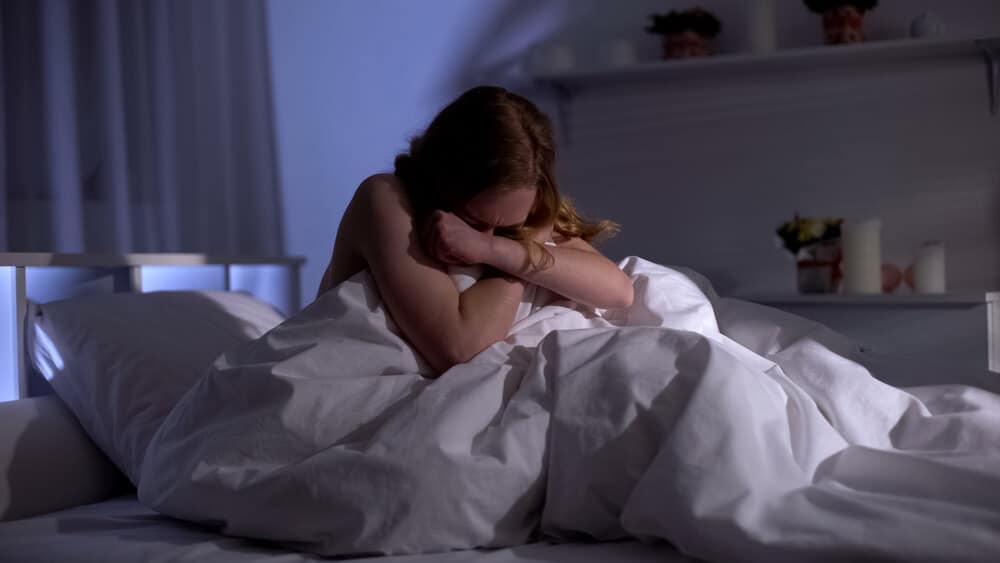
Post-traumatic stress disorder – PTSD – is, by its very name, a disorder that is triggered after a traumatic event. It may be almost immediately after, or it could be years later. The human brain has a way of storing information in compartments. There are good and bad memories, events of importance, and traumatic events.
If the human mind cannot handle an event, that event may be blocked from the person’s active memory. This type of suppressed memory can later show up as dissociative identity disorder (multiple personalities), a behavioral disorder, chronic depression and anxiety, or PTSD.
PTSD is a complex disorder that can be caused by any number of traumatic events, hide away in the subconscious for years, be triggered by even the smallest connection to the memory, and create havoc in the mind and emotions that requires treatment.
PTSD Defined
Posttraumatic stress disorder (PTSD) is a psychiatric disorder that happens when people experience or witness a traumatic event: a serious accident, a natural disaster like a hurricane or tornado, a terrorist act, war/combat, sexual assault, or other violent personal assault.
PTSD can occur in anyone, regardless of age, ethnicity, gender, or socioeconomic status. PTSD affects roughly 3.5 percent of American adults, with an estimated one in 11 people being diagnosed PTSD during their lifetime. Studies show that “about 15% to 43% of girls and 14% to 43% of boys go through at least one trauma. Of those children and teens who have had a trauma, 3% to 15% of girls and 1% to 6% of boys develop PTSD.” This is a real condition that can affect anyone.
Teens with PTSD have intense, disturbing thoughts and feelings about their experience that hang around for months or years after the trauma ends. They may recreate the event with flashbacks or nightmares; they may be sad, have anger or fear, and they tend to self-isolate. Teens with PTSD avoid circumstances or specific people that remind them of the trauma (triggers), and they may react strongly to ordinary noises such as a loud bang or bumping into someone.
Post-traumatic stress disorder symptoms generally begin about a month after a traumatic event, but symptoms can hide until years after the trauma. These symptoms can cause considerable issues in work and personal relationships. They can also interfere with your teen’s ability to complete routine daily tasks. According to the Mayo Clinic, PTSD symptoms can vary over time or vary from person to person:
- Recurrent, unwanted distressing memories of the trauma
- Flashbacks of the event
- Upsetting dreams or nightmares about the traumatic event
- Severe emotional distress or physical reactions to triggers
- Avoiding thinking or talking about the event
- Avoiding places, activities, or people that remind you of the event
- Negative changes in thinking and mood
- Negative thoughts about oneself, other people, or the world
- Hopelessness
- Memory problems, including blocked memories of the event
- Difficulty maintaining close relationships
- Feeling detached from family and friends
- Difficulty experiencing positive emotions
- Feeling emotionally numb
- Changes in physical and emotional reactions
- Being easily startled or frightened
- Always being on guard for danger
- Self-destructive behavior, such as drinking too much or driving too fast
- Trouble sleeping or concentrating
- Irritability, angry outbursts, or aggressive behavior
- Overwhelming guilt or shame
PTSD symptoms will vary in intensity over time. Your teen may have more PTSD symptoms when experiencing stress in general, or when they come across reminders of what they went through. In many cases, those memories are blocked by the brain as a safety mechanism and they hide out until triggered.
Why it Hides
Some traumas — such as chronic abuse — are so devastating and harrowing, the memories hide like a shadow in the brain.
At first, hidden memories that aren’t consciously accessed by your teen may protect them from experiencing emotional pain of the event. Over time, those suppressed memories can cause “debilitating psychological problems, such as anxiety, depression, post-traumatic stress disorder, or dissociative disorders.”
There are multiple pathways to storage of fear-inducing memories. Scientists are working on new treatments based on the discovery of a new pathway that affects memory storage of traumatic events. When your teen experiences a trigger, those memories can flood their consciousness and re-traumatize them.
Memories and emotions in the brain are generally directed by two amino acids: glutamate and GABA. Under normal circumstances, these acids are balanced and equal. Glutamate is the primary chemical that stores memories in our neural networks in a way that they are easy to remember. GABA calms the brain and allows for sleep.
When the teen brain is traumatized, glutamate quickly stores the memories but covers them up. GABA helps calm the body directly after the trauma. When a teen is later exposed to a trigger, those memories are released, and glutamate is out of balance with the calming GABA acid. Scientists suggest that when these acids are out of balance, they change the way traumatic events are encoded in the memory.
Research suggests that in response to trauma, some teens, instead of activating the glutamate system to store memories, activate the GABA system and form inaccessible traumatic memories. This allows the teen to continue with routine, daily activities and the memories wait for a trigger to release them.
Triggers
Today, PTSD is recognized in survivors of multiple kinds of trauma. The triggers vary, but survivors can include those who experienced disaster events–like mass shootings, bombings, terror attacks like September 11–or serving as a first responder in these kinds of traumatic events. Victims of sexual assault or physical assault can also experience symptoms of PTSD.
The symptoms can be mild—intrusive thoughts or nightmares that go away on their own—or more severe and chronic, such as those described above. A diagnosis of PTSD means your teen is directly affected by the traumatic event, believing that their own life or those they care about are in real, physical danger. To confirm the diagnosis, your teen must have exhibited symptoms for at least a month, according to the American Psychiatric Association. But, the symptoms often continue for months, years, or even for the remainder of your teen’s life.
Two of the most common triggers of PTSD are smells and sounds that are similar to what survivors experienced during their trauma. Upsetting smells might include burning meat, diesel fuel, certain perfumes or colognes, smells of moisture or rain, or even the smell of dirt. These things could remind your teen about where they were and what was happening just prior to and during the trauma. Triggering sounds might include helicopters, firecrackers, knocks on the door, jets flying overhead, certain songs, doors slamming, or other loud bangs.
For teen survivors of sexual or physical assault, common triggers remind them of the circumstances surrounding the assault. If your teen was attacked in a dorm, for instance, he or she may not go back into small spaces. If the attack took place at night, your teen may refuse to leave the house after dark and insist on leaving lights on all over the house. If the attack was sexual in nature, even consensual sexual activities months or years later could trigger memories of a sexual assault.
It is difficult for anyone to live with PTSD, but for teens, who don’t have total control over their living situation or the independence to seek help on their own, they need guidance in how to live with their diagnosis of PTSD.
Living with PTSD
Once you have your teen in therapy, there are techniques therapists can offer to help your teen find ways to cope. According to the Cleveland Clinic, there are things to make getting through each day a bit easier:
- Embrace daily (often mundane) routines. It can be tempting to self-isolate and avoid triggers, but avoiding life only makes symptoms worse.
- Ask for help. If your teen needs some adjustments to help him or her succeed at school, don’t be afraid to ask.
- Get support. Having supportive friends and family members is wonderful. They just need to know what your teen need — whether it’s driving your teen to therapy appointments, getting them together with friends, or just offering a sympathetic ear.
- If your teen’s inner circle can’t offer the help needed, try looking for a support group (in person or online) to connect with others facing similar challenges. It’s good for your teen to have friends who get it. NAMI, the National Alliance on Mental Illness, can help connect your teen to support groups and resources.
- Keep your teen away from drugs and alcohol. For teens especially, it can be tempting to use substances to escape the hard parts of PTSD.
- Don’t let your teen be too hard on him or herself – they are not weak; they are hurt. Teach your teen to be kind to him or herself. PTSD can cause feelings of guilt, shame, and anger. Self-care can offer your teen a respite from the hopelessness he or she may feel from time to time.
PTSD changes the structure of the teen brain. Think about that: your teen’s brain is physically different than it used to be. PTSD is not a weakness, and teens can’t just get over it. If your teen is feeling hopeless, and showing regular signs of PTSD, it is necessary to explore treatment options.
Treatment Options

When your teen has PTSD, they may think life will never return to normal. But PTSD can be treated. Short- and long-term psychotherapy and medications can work very well. Often, the two kinds of treatment are more effective together.
PTSD therapy has three main goals:
- Improve your symptoms
- Teach you skills to cope with it
- Restore your confidence and self-esteem
Most PTSD therapies use cognitive behavioral therapy (CBT), where your teen can change the thought patterns that are disturbing his or her life. This might happen through talking about the trauma or concentrating on where fears come from. And, depending on the family situation, group or family therapy might be a good option in addition to individual therapy.
Another therapeutic option would be Cognitive Processing Therapy (CPT). This is a 12-week course of treatment, where your teen will meet with a therapist once a week for 60-90 minutes.
This type of therapy is one step beyond CBT. First, your teen will talk about the traumatic event with the therapist and how his or her thoughts related to it have affected his or her life. Then, your teen will write in detail about what happened – this is known as journaling. Journaling helps teens examine how they think about their trauma and think about new ways to cope with the accompanying depression and anxiety.
For example, many victims of trauma will blame themselves for one part or all of the traumatic event. A therapist will help your teen recognize all the things that were beyond his or her control. This helps a teen to move forward knowing, without a doubt, that the traumatic event was not his or her fault and that moving on is perfectly acceptable. If your teen has been avoiding things that remind him or her of the traumatic event, the therapist may recommend immersion therapy to help your teen confront the fear and find peace.
During the early stages of treatment, the therapist will teach your teen breathing techniques to ease anxiety when thinking about the traumatic event. Later, your teen will make a list of the things he or she has been avoiding and learn how to face them, one by one. The therapist may also suggest recording a session and then having your teen listen to it at home to get a different perspective. Doing this as “homework” over time may help ease your teen’s symptoms.
Medications for depression and anxiety could be a part of your teen’s PTSD treatment, but that decision must be made by medical professionals familiar with your teen’s case.
Conclusion
Your teen or adult child may experience symptoms of PTSD months or years after the traumatic event. The triggers can set off a series of symptoms and behaviors that are distressing for the teen and for other members of the family. Contact Beachside in order to get treatment for your teen the moment you realize he or she is showing signs of PTSD.




